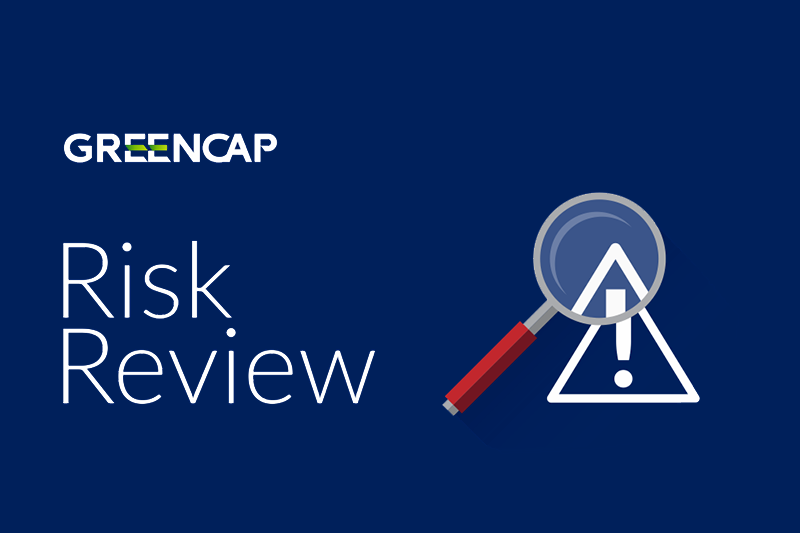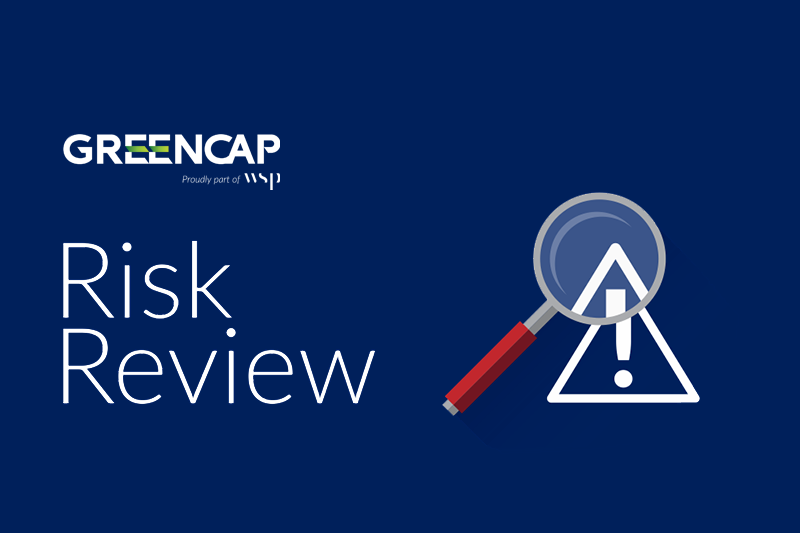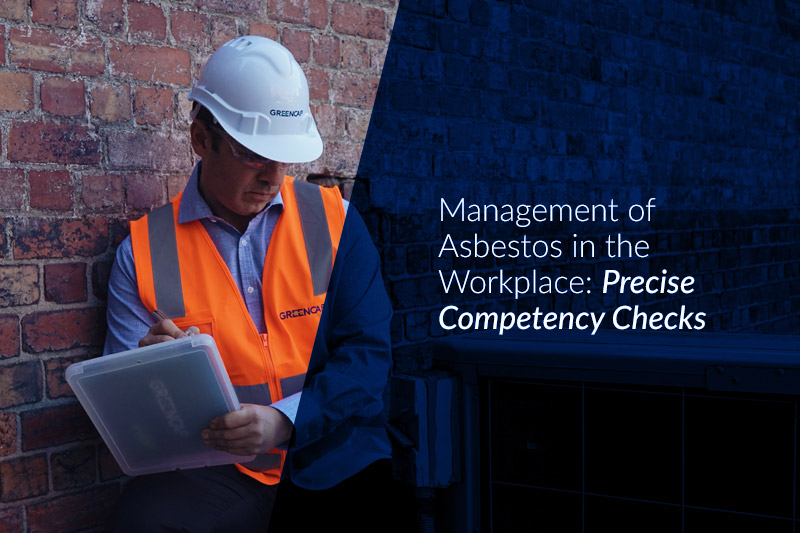News & Insights
Understanding Asbestos Surveys and Key Controls
Updated: June 2022
Despite being banned from use in Australia since 31st December 2003, asbestos is still a very topical issue in today’s workplaces. The continued raising of awareness is required to adequately mitigate the risk associated with this deadly product. This is exemplified by recent issues with imported products from overseas still containing asbestos and a general lack of understanding of asbestos registers and the requirements for intrusive or destructive testing prior to refurbishment.
Whilst many organisations have committed to ‘asbestos free’ workplaces, the lack of understanding of risk factors and the sheer cost and practicability of removal have been significant challenges for business and Government.
This Risk Review will make a distinction between the two common types of asbestos surveys and detail two key control measures for eliminating the risk of potential exposure to asbestos in the workplace.
Detecting Asbestos – Types of Asbestos Surveys
Depending on which state or territory you are in, there are a lot of names given to the types of asbestos surveys including:
- Management Surveys
- Compliance Surveys
- Division 5 Surveys
- Destructive Surveys
- Intrusive Surveys
- Division 6 Surveys
- Refurbishment Surveys
- Pre-Demolition Surveys
The various WHS/OHS legislation in each state and territory requires that all asbestos is to be identified or assumed at a workplace, and to ensure that a register is prepared and kept at that workplace. An asbestos survey is undertaken to identify and assess the risks associated with confirmed or assumed asbestos, and includes recommendations for the controls required to adequately manage each situation. The asbestos register forms part of the report that is produced following a survey.
There is often confusion as to what the difference is between these types of surveys, what their applications are, and when additional testing and investigations may be required.
The Victorian terminology of ‘Division 5’ and ‘Division 6’ arguably makes the clearest delineation between the types of surveys.
To simplify the distinction:
- A Division 5 (or ‘Compliance’) survey is prescribed to cover asbestos in the workplace under the conditions of normal building operations including ongoing maintenance (in situ) where no works are being undertaken.
- A Division 6 (or ‘Intrusive/Pre-Demolition/Refurbishment’) survey is prescribed to address the requirements for when planned renovation, upgrade, demolition and/or refurbishment works are proposed. There are other requirements, but this covers off on the general intent of the clauses.
Common Characteristics of a Compliance Survey or ‘Division 5’ Survey:
- Proactive – As required for all workplaces
- Non-Intrusive / Surface Materials only (readily accessible)
- Minimal destruction to building, plant, fixtures and fittings
- Restricted accessibility due to occupants and ongoing operations
- Low disturbance potential to asbestos materials
- Requirement to assume asbestos exists in inaccessible areas if presence is likely
- Generally inadequate for the purposes of renovations and upgrade works
A Division 5 Survey ('Compliance') will often have areas that are unable to be accessed. These areas may be height restricted or cannot be accessed without major damage to building, for example pulling up carpet to see whether there are vinyl floor tiles underneath or making holes in walls or risers to see if pipework or other materials are concealed. End-users should always be aware of these limitations when commissioning surveys and reading registers for determining whether there is asbestos in the areas they are planning to work in. It is important to remember that the register may not be a fully comprehensive list of all asbestos materials in the property.
The regulations require that if there is any uncertainty, the assumption should be made that the areas contain asbestos until it can be proven otherwise. This will be reported as 'Presumed Positive'. In addition, the person with management or control of a workplace must clearly indicate the presence and location of knownand assumed asbestos. This is usually done by labelling.
In most circumstances, the Division 5/Compliance register is inadequate for demolition or refurbishment works.
Common Characteristics of an Intrusive Survey or ‘Division 6’ Survey:
- Reactive – required as a result of planned / current works
- Highly intrusive to base building and internal plant / construction materials
- Requirement for significant localised destruction to building, plant, fixtures and fittings
- Higher frequency of sampling, to provide greater clarity on suspended materials
- Full access required due to the potentialdisturbance of installed materials during planned works
- Elevated risk of disturbing asbestos materials
- Whilst greater access is available, may still need to assume the presence of asbestos is likely
- Adequate for the purposes of renovations and upgrade works if conducted properly and in line with scope of works
To undertake a comprehensive Division 6 ('Intrusive/Pre-Demolition/Refurbishment') survey requires a clear understanding of proposed works at the premises, the area to be unoccupied, and permission granted by the client to be intrusive. Asbestos consultants (surveyors) generally end up being quite 'destructive' as the name suggests - making holes in walls or pulling up carpets to try and identify, so far as reasonably practicable, what asbestos exists within the defined area inspected. To complicate things, often a client may request a survey inbetween a Division 5 and Division 6, in which the area may still be operational and/or occupied, but slightly more intrusive investigations are required to assist with the project planning and budgeting process. Should the scope change, then the survey must be updated to reflect the changes.
This may be further compounded by the motivation of the engaging party (owner/builder). Paying additional costs up-front to understand the risks and their extent may favour one party whereas the ability to price a lower initial cost and then claim variations for time/cost due to missing information may favour another.
Having as much of this information up front prior to project commencement is essential. An assessment of the adequacy of the existing register against the planned works, followed by further investigations (where required) to obtain that extra level of detail and information can prove critical in avoiding project delays and expensive variations due to unexpected finds in relation to asbestos.
Most importantly, comprehensive assessment and management of asbestos by everyone involved reduces the likelihood of accidental disturbance of asbestos and ultimately minimises the risk of exposure airborne asbestos to building occupants or workers.
Re-Inspections
Re-inspection requirements can also vary between states and the consultant used. Some re-inspection scopes may be limited to re-inspection of previously identified items, meaning that if the previous survey missed something, it is not addressed in the subsequent re-inspection. A full re-survey of the property may not be required depending on the quality of the previous survey, and the areas not accessed. A risk-based approach is recommended. Nevertheless, the person in control of or managing a workplace must ensure all asbestos is identified or assumed.
Users at all levels of the process need to be aware of these types of surveys and potential limitations that exist. Care should be taken to understand areas that may not have been accessed or assessed and identify where further investigations are required. Having an ‘unexpected finds’ procedure as part of the Asbestos Management Plan for the property is also critical. An Asbestos Management Plan for each property is required under the various state-based legislation with a requirement to be kept up to date.
Case Study: Currong Public Housing – ACT
Issue
The 2015 Currong Public Housing demolition project saw costs blow out to more than double the original contract price for a second time. There was a failure to identify and understand the extent of asbestos materials present. The initial demolition survey was inadequate as many areas not accessed were recorded as free from asbestos materials. The areas in question could have been reasonably assumed to contain asbestos materials.
An adequate and thorough understanding of the asbestos materials in construction are required to plan demolition and refurbishment projects properly.
Actions
Greencap was engaged on this project in late 2015 to review the original report for the site. Areas previously not accessed were re-assessed as assumed to contain asbestos materials. A relatively inexpensive sampling program confirmed these assumptions to be correct. Asbestos found embedded in the concrete walls throughout the site was not considered in an earlier report.
Outcome
The additional findings from the more considered, comprehensive and intrusive asbestos survey saw demolition costs escalate from an already revised $6.25 million price tag (originally $3 million) to an expected $14 million.
Learnings
This project is a timely reminder of the importance of conducting a detailed, comprehensive asbestos survey, which is destructive in nature, at the start of a project, with assumptions on inaccessible areas made. This can save clients significant time and money in the long run, as well as minimising the risk of exposure to asbestos.
This particular outcome was inevitable without adequate asbestos and hazardous materials assessments being conducted at all phases of a property’s lifecycle. The situation could have been worse if asbestos containing building materials were allowed to be demolished without controls; putting people, the project and the environment at risk.
A detailed understanding of the implications of asbestos materials, construction and project work is critical to managing the risk regardless of the type of assessment being conducted.
Read: Cost of demolishing Currong public housing in city blows out to $14 million after asbestos found
Key Control Measures
Whether it is pre-existing or newly imported asbestos materials, asbestos products continue to cause issues for normal occupation, ongoing maintenance works, and demolition and refurbishment projects – costing time and money and presenting significant health risks.
Issues can be relatively easy to eliminate if expert services are engaged to partner in the processes by closing the gaps in the survey before work commences in any area where there is uncertainty. Labelling both the known and assumed asbestos items as well as the areas not accessed is also an important step in the process. Early detection of asbestos is critical to managing the risk, particularly at procurement/survey/testing phases to prevent unexpected finds and avoidable worker exposure.
Having a detailed understanding of the implications of asbestos materials, construction and project work is critical to managing the risk regardless of the type of assessment being conducted.
Common issues that seem to regularly occur during refurbishment and demolition projects highlight the importance of two other key control measures, aside from having a comprehensive asbestos register, to assist with eliminating the risk of potential exposure to asbestos in the workplace.
Asbestos Management Plans
As required under Regulation 429 of the harmonised Work Health and Safety Regulations, a written Asbestos Management Plan (AMP) is required to be established, adopted and maintained up to date, by building owners and / or managers wherever asbestos is known or assumed to be present in a workplace. All state/territory jurisdictions operate under this requirement or equivalent.*
An AMP is a key tool for property owners and business managers for use in their regulatory obligations to identify, assess and control the risks associated with asbestos but unfortunately is often overlooked. A comprehensive AMP, tailored to the client’s needs would greatly assist in foreseeing issues, preparing properly for situations and occurrences and ultimately reducing many problems for owners, managers, occupants, contractors and the public.
*While the Victorian regulations do not specify an AMP, the compliance code uses an AMP as the example to comply with managing asbestos on-site.
An AMP must include information about:
- Persons responsible for managing the asbestos risk
- Known asbestos materials identified and/or assumed
- Consultation and decisions regarding the management of the known asbestos
- Procedures for works, incidents, emergencies, and health monitoring involving asbestos
- Identification of workers, contractors, tenants and other persons effected by these activities
- Requirements for labelling, warning signage, notifications and inductions
- Working safely around asbestos
- Removal and licensing requirements
- Monitoring requirements
- Training
Ensuring the asbestos register and the AMP are in place is just the first step - making sure that both documents are accessible, read and understood by those involved in asbestos management and by workers within aworkplace is critical to effective asbestos management.
Asbestos Awareness Training
Regulations require that a person conducting a business or undertaking must ensure that all their workers who they reasonably believe will work with asbestos or asbestos containing materials have received asbestos awareness training. These workers include those involved in the construction, civil and mining industries, as well as a number of other occupations. Clause 445 of the Harmonised Work Health and Safety Regulations require that workers be trained about asbestos and that records are kept, confirming such training, Clauses 434 also covers naturally occurring asbestos.
The ACT Work Health and Safety Regulation 2011 requires that a person conducting a business or undertaking must ensure that all of their workers who they reasonably believe will work with asbestos or asbestos containing materials are trained in 10675NAT – Course in Asbestos Awareness.
Greencap offer both an online and face to face asbestos awareness training. Trainers have a wealth of experience and can customise courses to meet the needs and operational requirements of your business.
Adeqaute training should also be undertaken by building owners and facility managers, wherever asbestos is known or assumed to be present in a workplace. Such roles have the responsibility of ensuring asbestos is effectively managed including the requirements for asbestos registers, AMPs, use of appropriately competent and licensed contractors, and other regulatory obligations. All state/territory jurisdictions either operate under this requirement or equivalent.
Providing training that is suitable and adeqaute for the roles and tasks of all those involved is a key requirement for the proper management of asbestos materials and is also required to be conducted under a well-considered AMP. Trained people are empowered to understand the presence the nature of the risk and are therefore a key element in the hierarchy of controls to avoid unnecessary asbestos exposure.
Having increased awareness at all levels of management and phases of a project cycle is critical to effectively reducing the risk and avoidable exposure to asbestos.
Asbestos Awareness Training should include information about:
- The nature of the naturally occurring asbestos mineral
- The health risks posed by exposure to asbestos fibres
- The common uses for and likely occurrences for asbestos in buildings
- The asbestos materials known to be present at their workplace and at similar workplaces
- Identification, assessment and management requirements for known asbestos
- How to interpret and understand an Asbestos Register or Management Plan
- Health monitoring systems and requirements for themselves and other workers
![]()
Learn in depth about asbestos labelling and signage requirements and more in Greencap's Online Asbestos Awareness Training course
How Greencap Can Assist
Greencap has offices in all mainland state and territories of Australia and has been specialising in the area of asbestos for over 35 years.
![]()
Asbestos Management Plans
Greencap partners with building owners and managers to provide tailored, practical, cost-effective solutions like Asbestos Management Plans to provide security for assets and people.
To ensure that clients receive technical excellence and long-term value, Greencap operates under rigorous internal and externally accredited quality manual systems and technical procedures including ISO17020 (Inspection), ISO17025 (Laboratory Analysis) and ISO9001 (Quality).
![]()
Muddy Boots Asbestos Training
Greencap’s Muddy Boots Asbestos Training provides industry-leading asbestos training* that is customised to meet client requirements, policies and procedures. Courses can be delivered at Greencap training facilities, at your workplace, or virtually, and include:
- Asbestos Awareness
- Asbestos Management Responsibilities
- Asbestos Management Plans
- Asbestos Handling (design for people working with less than 10 m2 of asbestos)
- Silica Awareness
*Non-Accredited
![]()
NATA Accredited Laboratories
To provide asbestos identification and fibre counting services, Greencap has NATA-accredited laboratories in Sydney, Wollongong, Darwin, Melbourne. Adelaide, Perth and Brisbane, with an X_Ray Diffraction (XRD) machine in the Adelaide laboratory for mineral identification and specialised testing around vinyl floor tiles and silica/quartz.
Greencap has an exemption to import samples into Australia for the purpose of testing and analysis, enabling samples to be tested before the materials are shipped to Australia. Advice and sampling is available for builders, importers, architects, customs agents and clients prior to the materials being exported.
Additional Asbestos & Hazardous Materials Services
- Asbestos in soils
- Asbestos surveys
- Asbestos compliance risk assessments
- Demolition and refurbishment risk assessments
- Clearance inspections and reporting
- Asbestos fibre air monitoring
- Preparation of asbestos removal specifications
- Project management and tendering services
- Due diligence assessment and reports
- A range of innovative and cost effective risk and contractor management tools
- Competent and Licensed Asbestos Assessors across Australia
For more information about how asbestos could impact your workplace or facility, and how Greencap can help deliver value to your business:
Contact Greencap’s expert team
The information in this material is not intended to provide, and should not be relied upon, for legal or professional advice and is subject to change.
This material provides general information only and does not take into account your particular circumstances. Before making any decisions, you should assess whether this material is appropriate for you and obtain legal advice tailored to you having regard to your particular needs and circumstances.
Greencap Pty Ltd (Greencap), its officers, employees and agents believe that the information in this material and the sources on which the information is based (which may be sourced from third parties) are correct as at the date of publication. While every care has been taken in the preparation of this material, no warranty is given for its reliability or accuracy and no responsibility is accepted by Greencap, its officers, employees or agents. If this material contains links to third party websites, Greencap does not control and is not responsible for the information contained within these websites. None of these links imply Greencap’s support, endorsement or recommendation of any other company, product or service.



Greencap acknowledges the Traditional Owners of Country throughout Australia and recognises their continuing connection to land, waters and culture. We pay our respects to their Elders past, present and emerging.




